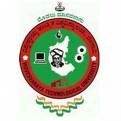| 5th Semester Course Description |
| ANALOG COMMUNICATION :: EC 51 |
| This Course on Analog communication gives introduction to concept of basic communication system, modulation. It provides detailed study of various continuous wave modulation schemes AM, DSB-SC, SSB, FM, and also a study of noise analysis, noise performance of AM, FM systems. This subject deals with various analog modulations, demodulation circuits with mathematical analysis. FM modulation techniques direct method, indirect method, and FM demodulation techniques (Slope detector, PLL) are discussed. Concepts related TV picture scanning, TV transmission, reception covered This subject deals with random process, various types of noise and noise performance of various CW modulation schemes.
|
| DIGITAL SIGNAL PROCESSING :: EC 52 |
| This subject Digital signal processing basically involves processing of discrete samples of data, the tools like Discrete Fourier transform and its properties are introduced, Fast Fourier transform algorithm implementation is also explained. Digital filters design concept with BUTTERWORH and CHE byshev approximations are discussed in detail. Also design of IIR filters, FIR filters and realization forms gives the complete idea for the student to familiarize the different operations performed by the DSP processor. Applications:
DSP for speech and voice .DSP for telecommunications, consumer applications Graphics , military/ defense, industrial application, automotive applications etc.
|
| TRANSMISSION LINES & WAVE GUIDES :: EC 53 |
| Mathematical analysis of the behavior of electrical transmission line grew out of the work of James clerk Maxwell, Lord Kelvin and Oliver Heaviside. In 1855 Lord Kelvin formulated a diffusion model of the current in a submarine cable. The model currently predicted the poor performance of the 1858 Trans – Atlantic submarine telegraph cable. In 1885 televised published the first paper that described the analysis of propagation in cables and the modern form of the telegrapher’s equation. A Transmission Line is a material medium or structure that forms all or part of a path from one place to another for directing the transmission energy, such as electromagnetic waves or acoustic waves as well as electric power transmission. Components of transmission lines include wires, coaxial cables, dielectric slab, optic fibers, electric power lines and wave guides. The RF signaling concepts are also used in the areas of satellite communication, cabling networks, and other RF Systems. General application of transmission line is transferring signals from one point to another, pulse generation, stub filters, acoustic transmission line. Application of transmission line in Matrix method of antenna, modeling for studying the effectiveness of screened enclosures, pulse testing for the ESD analysis of integrated circuits, modeling and simulation of an induction motor drive etc This course deals with the study of Transmission line theory, Line at radio frequency, Guided waves, Wave guides.
|
| ADVANCED MICROPROCESSOR :: EC 54 |
This course gives complete information of Intel 8086 microprocessor‘s architecture and instruction set, examples of programming 8086 microprocessor. This course also provides information of Intel 8087 co-processor’s architecture and instruction set. Gives knowledge of bus interfaces& Introduction to 386 to pro Pentium Processors.
|
| TELECOMMUNICATION SWITCHING :: EC 55 |
| The subject Telecommunication and switching mainly deals with different switching systems, Telecommunication Traffic analysis, different Switching Networks, TDM Technique, control of switching systems, Important of signaling, different Standards set for Networks systems. So in brief I can say Telecommunication and switching sub gives basic knowledge and mathematical treatment for analyzing Traffic problems in different Telecom Network systems and what are recent advancements taken place in Telecommunication Engineering field.
|
| SOLID STATE DEVICES :: EC 56 |
| This course will provide an introduction to the basic principles of solid state devices. The goal of the course is familiarize the student with the underlying principles of the field and prepare for more detailed study in the form of advanced courses and/or research. The physical properties of semiconductor materials and basic quantum theory concepts will be applied to understanding energy bands and the behavior of charge carriers (electrons and holes) in semiconductors. The course will then build on these concepts to understand the operation of simple devices such as p-n junctions. More complex devices such as Field Effect Transistors (FETs), Bipolar Junction Transistors (BJTs) will also be covered. As a result of this course, it is expected that the student will be able to: - Describe the basic properties of semiconductor materials such as their crystalline structure, energy bands, etc.
- Quantify the behavior of semiconductors and their charge carriers under various doping conditions.
- Describe the operating principles of p-n junctions including current flow, electric fields and the origin of diode I-V characteristics.
- Explain the operation of Metal-Oxide-Semiconductor structures and their use in transistors.
- Describe the operation of bipolar transistors.
Topics covered: - Semiconductor Physics of PN Junction Diodes
- Fabrication Technology
- Bipolar Transistors : Characteristics and First Order model, Limitations, Switching and Models
- Junction Field Effect Transistors
- Metal Semiconductor Junctions and diodes
- Metal Oxide Silicon systems
- Metal Oxide Semiconductor Field Effect Transistor
|
![]()
![]()
![]()
![]()

1 comment:
thnx
Post a Comment